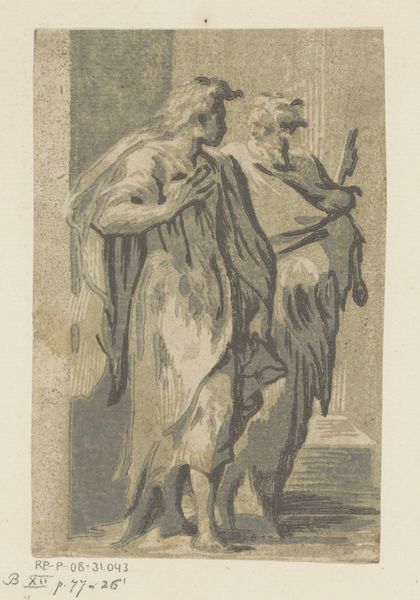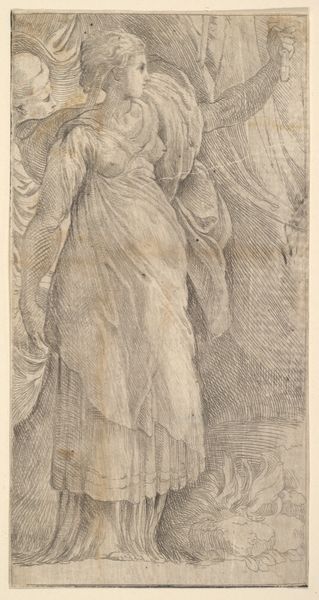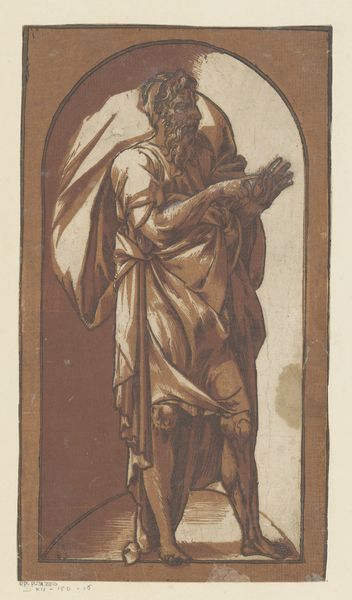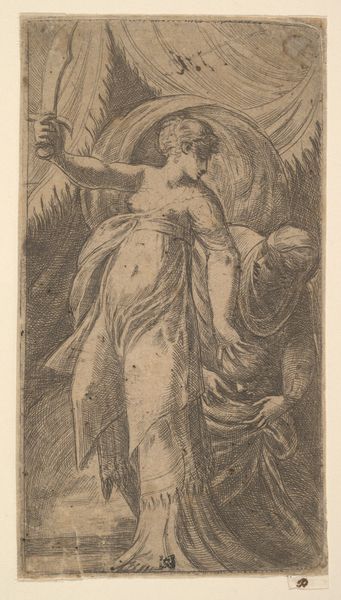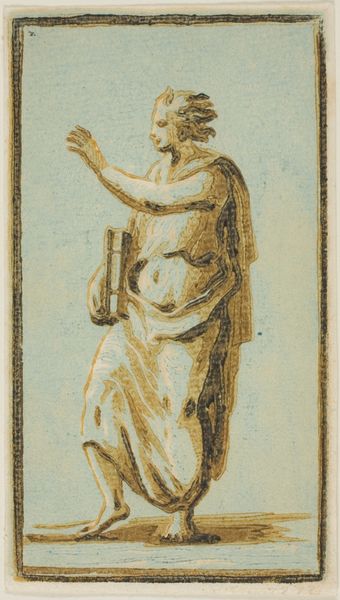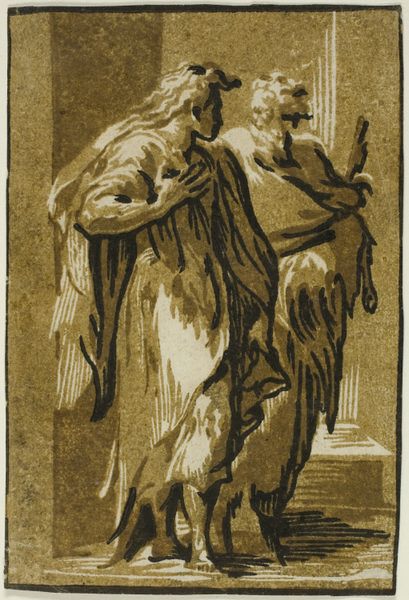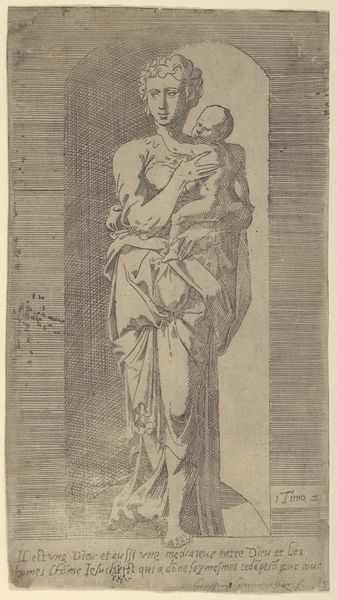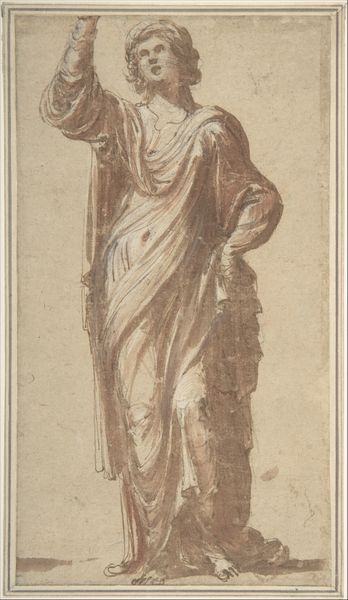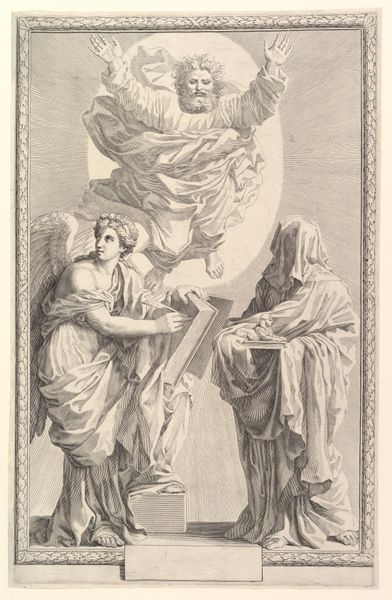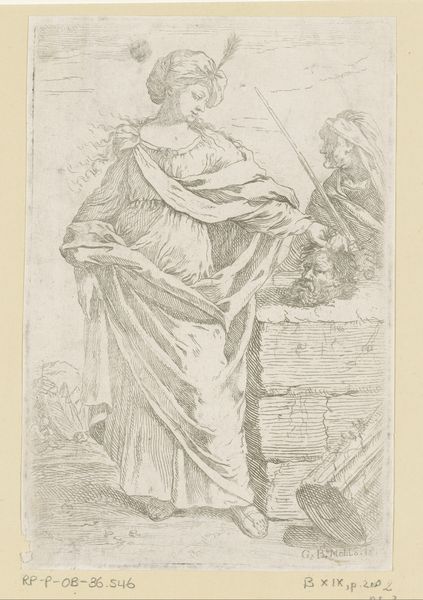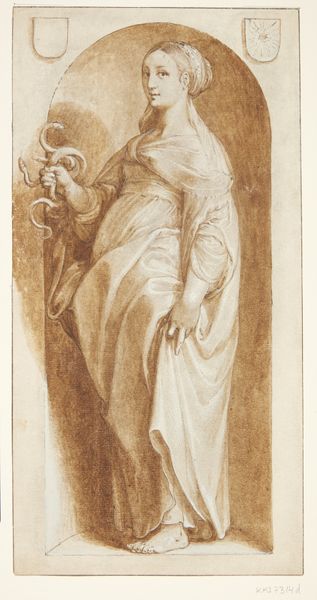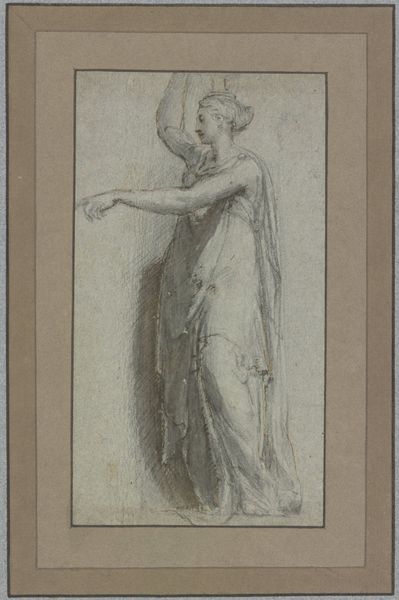
print, woodcut
#
portrait
#
narrative-art
# print
#
old engraving style
#
figuration
#
11_renaissance
#
woodcut
#
chiaroscuro
#
history-painting
#
italian-renaissance
Dimensions: height 158 mm, width 106 mm
Copyright: Rijks Museum: Open Domain
Curator: Ugo da Carpi created this woodcut print, "Saints John and Peter," sometime between 1502 and 1532, a compelling example of Italian Renaissance printmaking. Editor: My first impression is the striking use of chiaroscuro, really emphasizing the three-dimensionality of the figures against a very sparse architectural backdrop. It gives the piece a sense of dramatic gravitas, even in its monochromatic palette. Curator: Absolutely, the composition, though simple, draws deeply from iconographic traditions of representing these important religious figures. John is shown with a youthful visage, often symbolic of his role as a favored disciple, contrasted against Peter, who has a venerable, almost stoic, bearing fitting with his image as the first Pope. Editor: It's fascinating how da Carpi managed to create this dramatic effect with a relatively simple process – a woodcut. Think of the physical labor, the carving away, the inking, the pressing. This isn’t just about religious representation; it's also about the manual skills inherent to reproducible image-making and the social position of the craft involved. Curator: That's a great point, placing the craftsmanship within its social context! The choice of woodcut for disseminating religious imagery contributes significantly to its accessibility during that period, it’s really interesting how woodcut prints made iconography much more visible to wider audiences in society. Editor: Indeed. And beyond that visibility, you see the inherent grain of the wood almost imparting a texture to the garments. It marries the high subject of religion with a low-art material. Almost as a process the artwork democratizes what were elite religious subjects in painting at the time. Curator: Thinking about that democratization also prompts reflections on how viewers during the Renaissance perceived these prints – these familiar depictions were psychological and spiritual touchstones. They shaped people's understanding and experience of faith during periods of social upheaval. Editor: Well, that wraps it up for me, looking at both the art and craft of Ugo da Carpi's “Saints John and Peter”, I have to really reconsider just how much these Renaissance era materials told the audience and society about who was consuming and reproducing these images. Curator: A perfect conclusion and an exciting exploration through symbolism, artistry and material context!
Comments
No comments
Be the first to comment and join the conversation on the ultimate creative platform.
